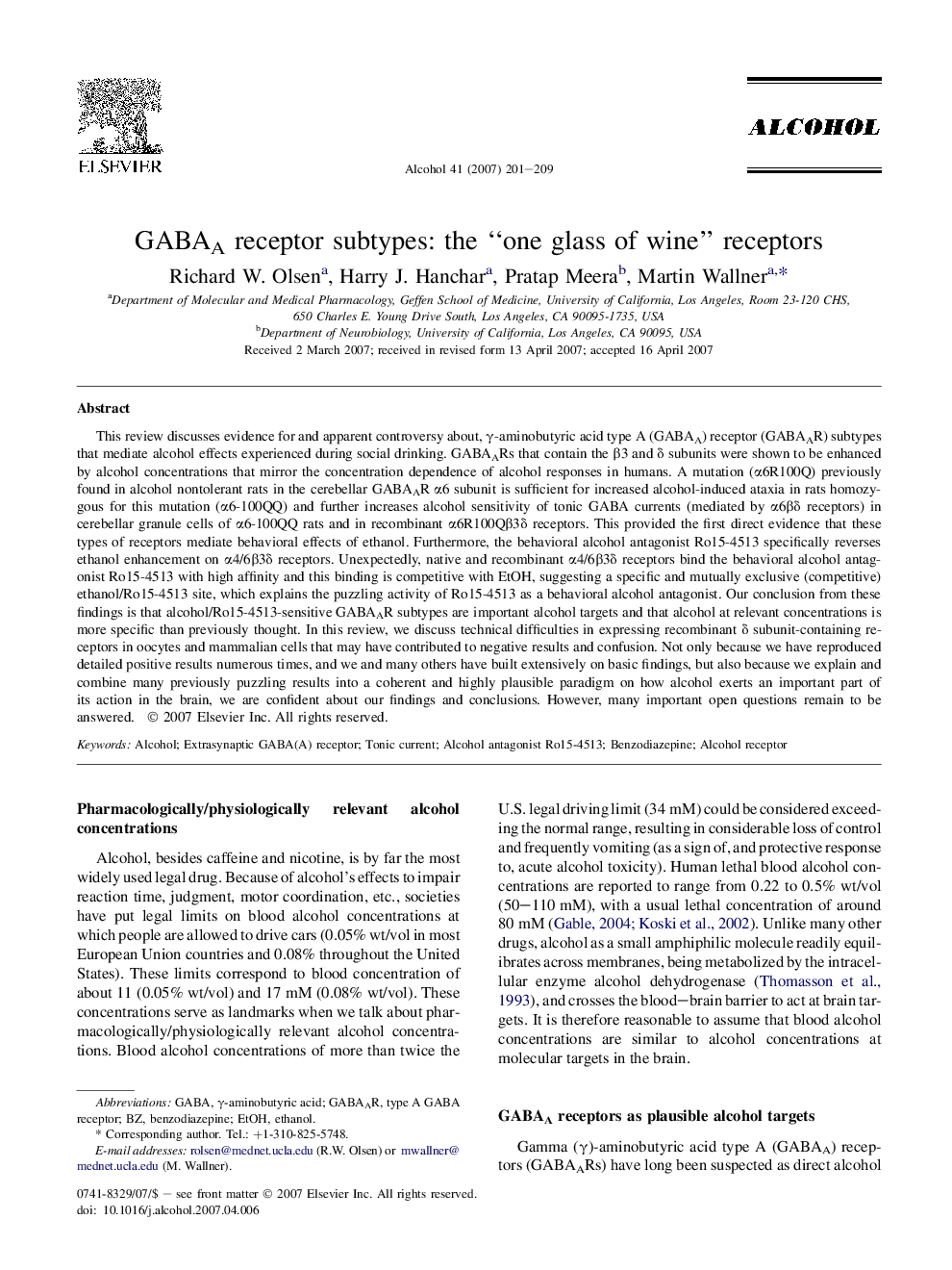| کد مقاله | کد نشریه | سال انتشار | مقاله انگلیسی | نسخه تمام متن |
|---|---|---|---|---|
| 1067306 | 948882 | 2007 | 9 صفحه PDF | دانلود رایگان |

This review discusses evidence for and apparent controversy about, γ-aminobutyric acid type A (GABAA) receptor (GABAAR) subtypes that mediate alcohol effects experienced during social drinking. GABAARs that contain the β3 and δ subunits were shown to be enhanced by alcohol concentrations that mirror the concentration dependence of alcohol responses in humans. A mutation (α6R100Q) previously found in alcohol nontolerant rats in the cerebellar GABAAR α6 subunit is sufficient for increased alcohol-induced ataxia in rats homozygous for this mutation (α6-100QQ) and further increases alcohol sensitivity of tonic GABA currents (mediated by α6βδ receptors) in cerebellar granule cells of α6-100QQ rats and in recombinant α6R100Qβ3δ receptors. This provided the first direct evidence that these types of receptors mediate behavioral effects of ethanol. Furthermore, the behavioral alcohol antagonist Ro15-4513 specifically reverses ethanol enhancement on α4/6β3δ receptors. Unexpectedly, native and recombinant α4/6β3δ receptors bind the behavioral alcohol antagonist Ro15-4513 with high affinity and this binding is competitive with EtOH, suggesting a specific and mutually exclusive (competitive) ethanol/Ro15-4513 site, which explains the puzzling activity of Ro15-4513 as a behavioral alcohol antagonist. Our conclusion from these findings is that alcohol/Ro15-4513-sensitive GABAAR subtypes are important alcohol targets and that alcohol at relevant concentrations is more specific than previously thought. In this review, we discuss technical difficulties in expressing recombinant δ subunit-containing receptors in oocytes and mammalian cells that may have contributed to negative results and confusion. Not only because we have reproduced detailed positive results numerous times, and we and many others have built extensively on basic findings, but also because we explain and combine many previously puzzling results into a coherent and highly plausible paradigm on how alcohol exerts an important part of its action in the brain, we are confident about our findings and conclusions. However, many important open questions remain to be answered.
Journal: Alcohol - Volume 41, Issue 3, May 2007, Pages 201–209